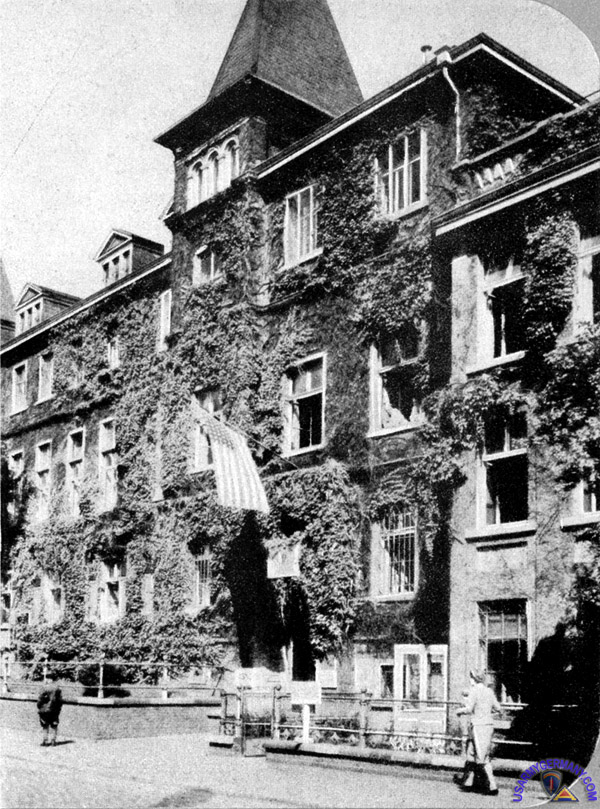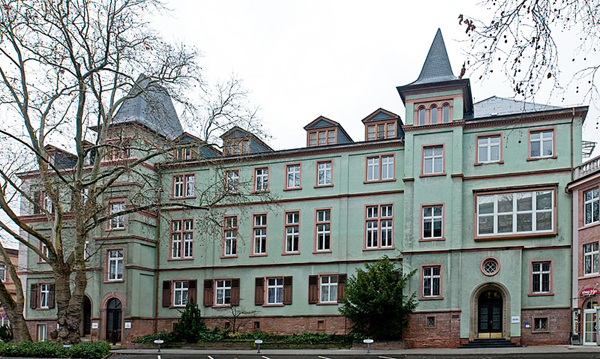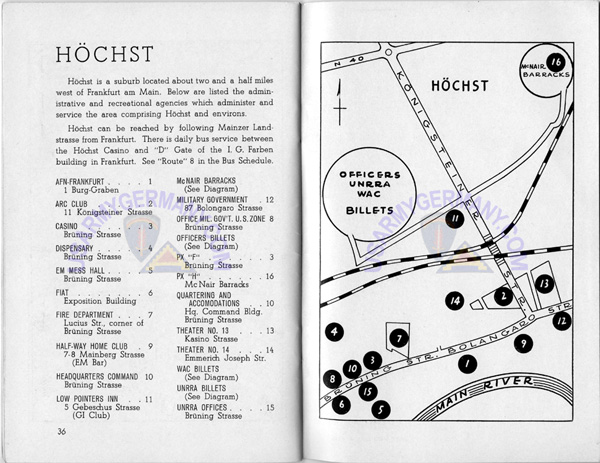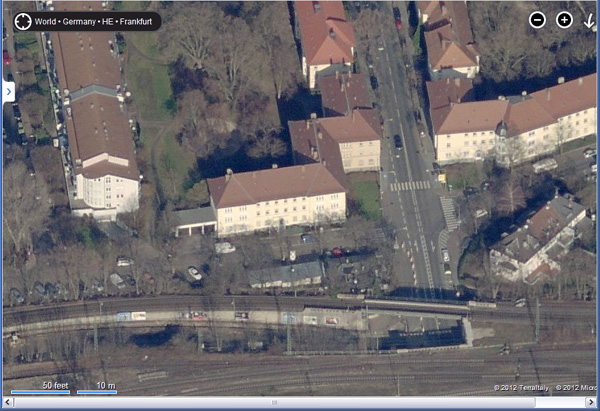Click here to open 'USArmyGermany' frameset

The IG Farben Casino in Hoechst, center of subpost activity in the 1940s
In the future, military personnel, dependents and other persons authorized treatment at Army medical facilities will have to go to the Army dispensary at 134 Hansa Allee in Frankfurt for medical care.
| The General Board was established on 17 June 1945 (Note) to prepare a factual analysis intended to present the strategy of the campaign as it had been planned and as it actually had been carried out and to formulate recommendations pertaining to such changes in tactical and administrative doctrines, techniques, organization, and equipment of the U.S. Army ground and air forces as were indicated by the analysis to be desirable. The Board was also to make studies and recommendations on special problems referred to it by Theater Headquarters. The Board was assigned as a special unit within the headquarters of the Fifteenth U.S. Army and shared its commanding officer. Gen Jacob L. Devers was president of the General Board, in addition to his his other duties, and Lt Gen Leonard T. Gerow, deputy president. On 4 July 1945, General Gerow succeeded General Devers as president. Gen George S. Patton was appointed Commander, Fifteenth Army, and President of the European Theater General Board on 14 October 1945. (See article: Patton's Secret: "I Am Going to Resign From the Army." by Robert S. Allen, The Patton Society website. In November, Patton replaced Gen. Eisenhower as commander of US Forces in Europe. However, as a result of a car accident, Gen Patton passed away on 21 Dec. 1945 in Heidelberg, Germany.) The Fifteenth Army consisted solely of a small staff quartered at Bad Nauheim, in the interior of Germany. At that time the photos above were taken, the staff of the General Board was keeping itself busy collecting and sorting documents and material for the compiling of histories of the war in the European Theater. The Fifteenth US Army consisted solely of a small staff quartered at Bad Nauheim, in the interior of Germany. At that time it was keeping itself busy collecting and sorting documents and material for the compiling of histories of the war in the European Theater. The General Board was established by General Orders 128, Hqs European Theater of Operations, US Army, dated 17 June 1945, as amended by General Orders 182, dated 7 August 1945 and General Orders 312, dated 20 November 1945, Hqs US Forces European Theater, to prepare a factual analysis of the strategy, tactics, and administration employed by the United States Forces in the European Theater during World War II. |
The Fifteenth Army at present consists only of headquarters and special troops assigned to gather historical data on Allied operations during the war. |


